Microsoft’s Life Cycle Services is cloud-based workspace that improves the efficiency and collaboration of Microsoft Dynamics AX 2012 implementations. Life Cycle Services offers the tool Business Process Modeler to provide organizations with the ability to align their Dynamics AX process with industry leading process standards and create detailed flowcharts. Business Process Modeler provides a platform to create step by step instructions for all processes with their Dynamics AX system.
The manual work of creating flowcharts and step by step instructions for each business process is drastically reduced when Business Process Modeler and Dynamics AX 2012 Task Recorder are leveraged. Uploading an .AXBPM file from Task Recorder into Business Process Modeler automatically generates a flowchart, step by step instructions, and video corresponding to the recorded process. The following tutorial will explain how to record a task in Dynamics AX 2012 using Task Recorder, export the recorded process in an .AXBPM file and upload the process into Life Cycle Service’s Business Process Modeler.
We begin by opening Microsoft Dynamics AX 2012 and navigating to the Task Recorder. This can be done following File > Tools > Task Recorder.
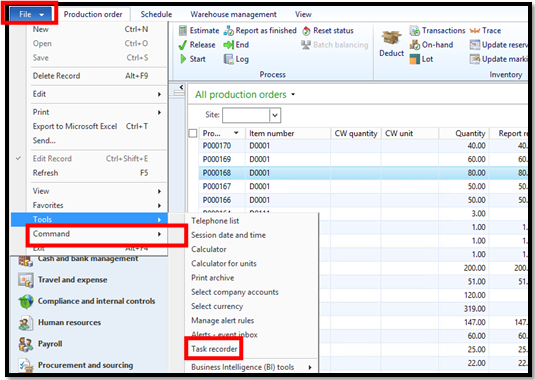
Once Task Recorder is open, ensure that you are in Advanced Mode before you start to record. Advanced Mode is set by following: Settings > Hierarchy Levels > Advanced Mode.
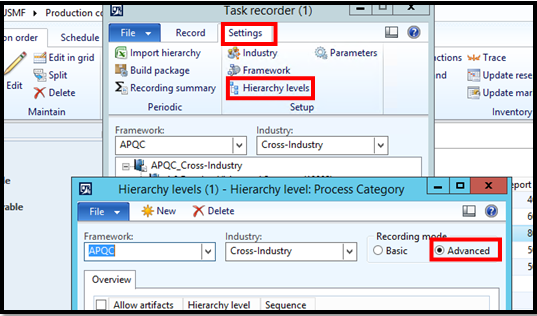
After the Recording mode has been set to Advanced, you are ready to record the process in Task Recorder. Before you start recording, select the node that corresponds to the process you are about to perform. If no node exists, create a new node before proceeding. Select Record > Start to start recording the process and Stop to stop recording.
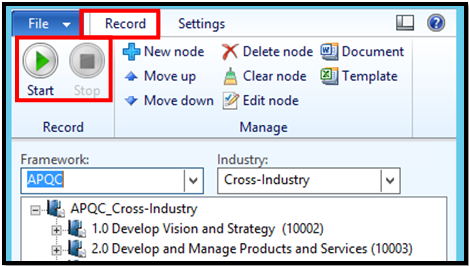
Once the recording is finished, you are ready to export the process and upload to Business Process Modeler within Life Cycle Services. Before doing so, however, the recording must be built into a package for an .AXBPM to be generated. When you build a package, all recordings in the Framework and Industry are included. To build package follow: Setting > Build Package.
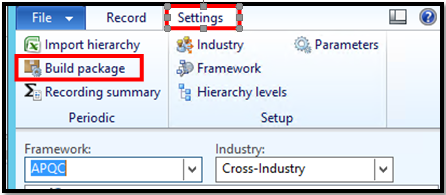
It is important to keep track of where the package can be located after it is built. Setting > Parameters > Recording File Path signifies where the built package can be located once finished. Copy and paste this file path into the Library search bar to locate the finished built package.
Note that the package may take time to build and will not be completely finished when you locate it.
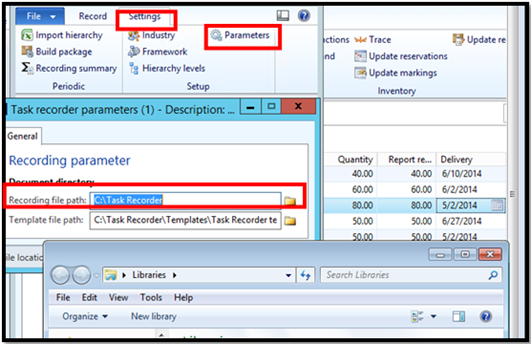
The built package containing the .AXBPM files associated with your recorded processes is now ready to be uploaded to Life Cycle Services. To begin the upload process, log into Life Cycle Services, select the project associated with the process you are uploading, and open Business Process Modeler. Business Process Modeler is located on the right side of the project screen under More Tools.
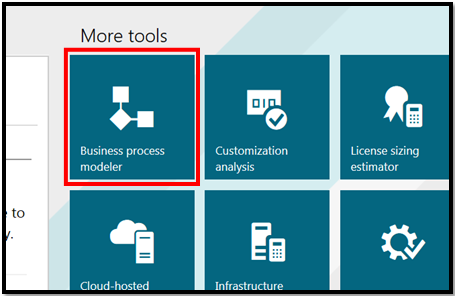
Once Business Process Modeler is open, you can decide into which library to upload the process. The Corporate Libraries is where custom-created business processes created by any user are stored. The “My Libraries” is where processes created and visible only to you are kept.
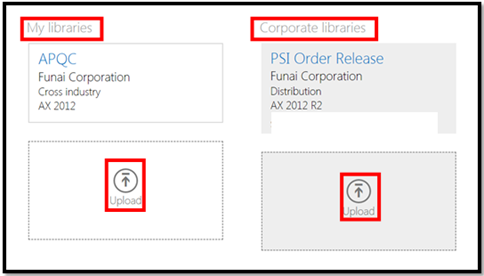
After selecting the library, you can now upload your process into Business Process Modeler. You can either upload the process as new or attach as an artifact to an existing solution that already exists. Upload Steps: Name > Description > Click Upload > Locate and select .AXBPM file.
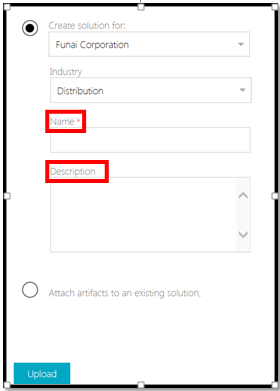
Once the .AXBPM file has been uploaded, you are ready to import it to your core business processes. Select the industry that you are uploading the process to, select Author and edit under the Core Views panel, and select Import under the Process hierarchy.
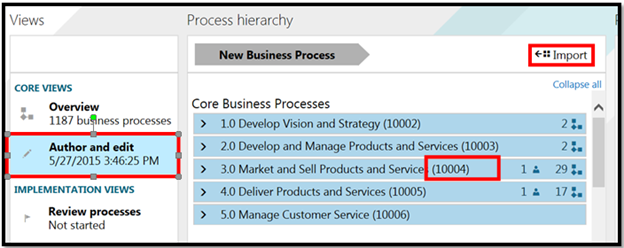
From the Import Business Process Screen, you are going to select the process to import by navigating to the Select library drop-down down box and choosing the library containing your business process(es) that were uploaded.
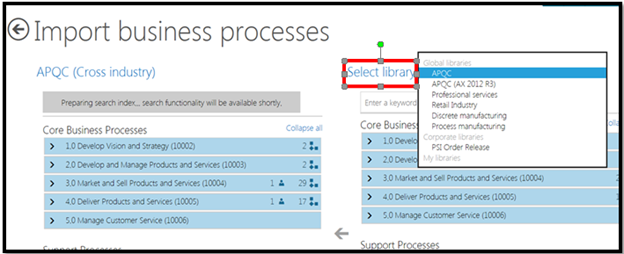
After selecting the library, you will click the process and drag the process to its proper location in you industry’s core business process library.
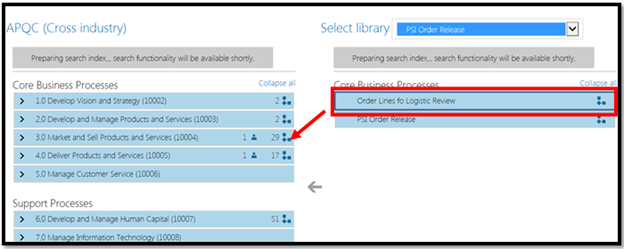
The business process that you have recorded using Dynamics AX 2012 Task Recorder is now in your company’s Life Cycle Service account. A ![]() symbol signifies a custom-created process and a
symbol signifies a custom-created process and a ![]() signifies that the process contains a flowchart. A flowchart, process step and video corresponding to the process will now be generated and accessible by Life Cycle Services users in your corporation.
signifies that the process contains a flowchart. A flowchart, process step and video corresponding to the process will now be generated and accessible by Life Cycle Services users in your corporation.
Life Cycle Service’s Business Process Modeler tool and Dynamics AX 2012’s Task Recorder are two tools that have made process documentation and sharing more effective and accessible. Leveraging these tools will add value to the implementation and end-user training process.
If you have questions about Life Cycle Services or need support for Microsoft Dynamics AX, RSM can help. RSM’s Dynamics AX practice is a national team with resources across the United States. We offer access to Microsoft Certified Professionals with current Dynamics certifications in a broad range of functionalities. If you’d like to learn more about how we can help, contact our professional at erp@rsmus.com or call us at 855.437.7202.
If you like this tip, consider a subscription to our Dynamics Community News publication.
By: Bobby Coffin – California Microsoft Dynamics AX partner

 RSMUS.com
RSMUS.com